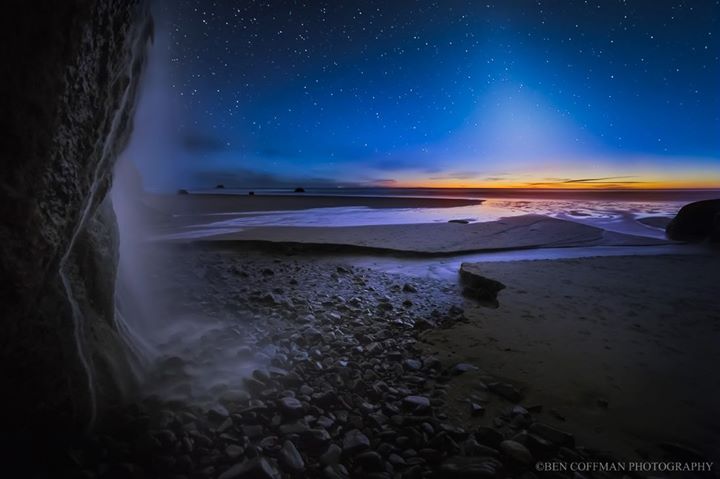17 February 2020, 09:32 AM
markjIt’s time to watch for the zodiacal light

quote:The zodiacal light is a cone of eerie light at the sunrise or sunset point on the horizon, before dawn breaks or after twilight ends. No matter where you are on Earth, you’ve got the best chance of seeing it in the west in late winter or early spring (false dusk). Your best chance to see it in the east before dawn is late summer or early autumn (false dawn).
...
People used to think zodiacal light originated somehow from phenomena in Earth’s upper atmosphere, but today we understand it as sunlight reflecting off dust grains that circle the sun in the inner solar system. These grains are thought to be left over from the process that created our Earth and the other planets of our solar system 4.5 billion years ago.
These dust grains in space spread out from the sun in the same flat disc of space inhabited by Mercury, Venus, Earth, Mars and the other planets in our sun’s family. This flat space around the sun – the plane of our solar system – translates on our sky to a narrow pathway called the ecliptic. This is the same pathway traveled by the sun and moon as they journey across our sky.
The pathway of the sun and moon was called the zodiac or pathway of animals by our ancestors, in honor of the constellations seen beyond it.
The word zodiacal stems from the word zodiac.
In other words, the zodiacal light is a solar system phenomenon. The grains of dust that create it are like tiny worlds – ranging from meter-sized to micron-sized – densest around the immediate vicinity of the sun and extending outward beyond the orbit of Mars. Sunlight shines on these grains of dust to create the light we see.
Since they lie in the flat sheet of space around the sun, we could, in theory, see them as a band of dust across our entire sky, marking the same path that the sun follows during the day. And, it’s true, there are sky phenomena associated with this band of dust, such as the gegenschein. But seeing such elusive sky phenomena as the gegenschein is difficult. Most of us see only the more obvious part of this dust band – the zodiacal light – in either spring or fall.
Source